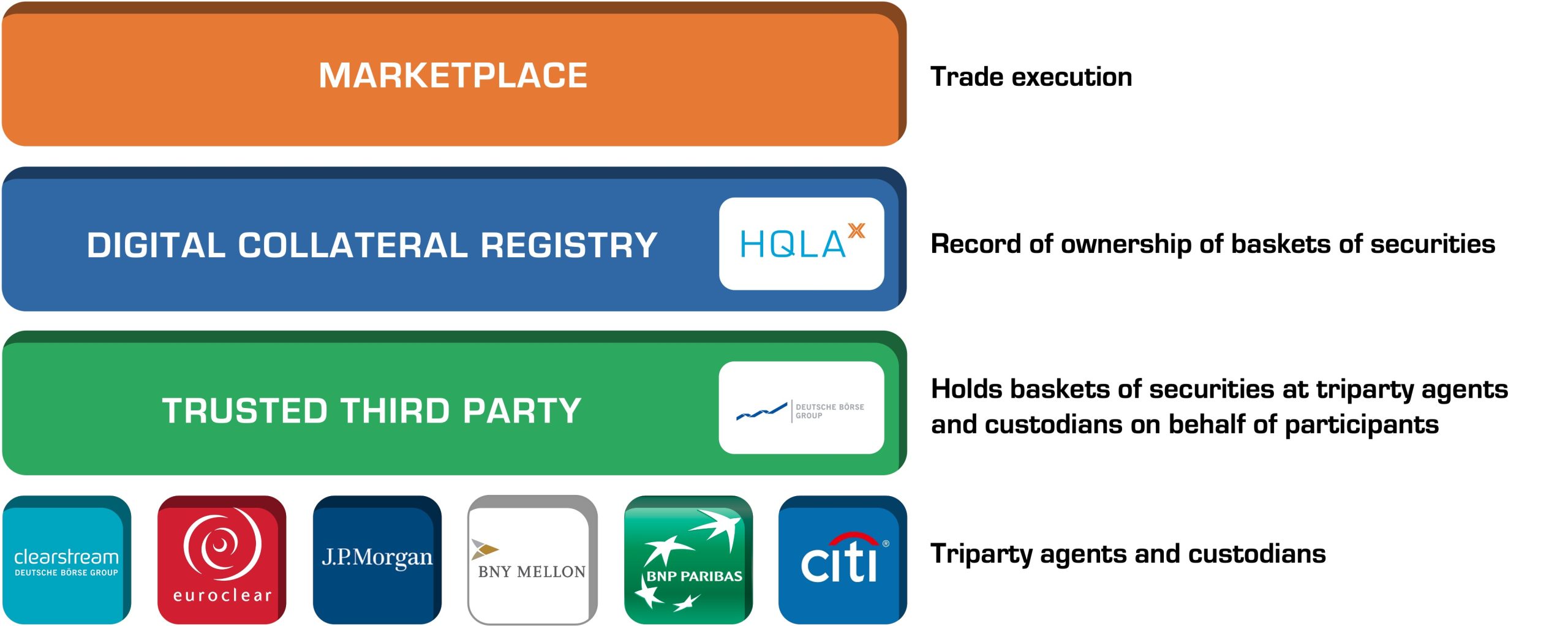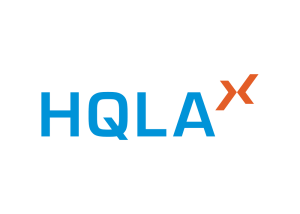The sharp volatility experienced in the UK Gilt markets in September and October 2022, the result of an ill-conceived government mini-budget, was exacerbated by Liability Driven Investment (LDI) strategies selling Gilts to meet their OTC derivatives margin requirements. Variation Margin (VM) calls to LDI funds created a processing backlog and delays in moving collateral. HQLAX, a Distributed Ledger Technology (DLT) platform in collateral markets, offers a solution that digitizes collateral by ISIN. We set out to identify if HQLAX’s Digital Collateral Records (DCRs) would have helped ease the operational or market burden of margin processing and Gilt volatility this past fall.
What happened in the market
On September 23, 2022, then-UK Chancellor of the Exchequer Kwasi Kwarteng announced tax changes for individuals and corporations (the “mini-budget”) that were poorly received by the market. Investors responded by selling UK Gilts, which increased UK borrowing costs by an estimated 0.3% in one day. The yield on the 30 year Gilt rose by 120 basis points over the following three days. These were unprecedented rate moves in recent UK history.
LDI strategies contributed to the rising 30 year yield by selling off holdings to meet margin calls on their bilateral OTC derivatives contracts. LDI strategies use derivatives and term repo to lock in leveraged returns for their investors in long duration assets often linked to inflation. When Gilt values fall, LDIs must post additional Variation Margin (VM) as agreed to with their bank counterparties. There are roughly £1.6 trillion in UK LDI assets outstanding, according to The Investment Association.
Prior to September 2022, most agreements required cash as the only acceptable source of LDI VM margin. LDIs typically hold long dated government bonds as assets and do not maintain large cash reserves. When a sharp downside market movement occurs, these investors must sell their holdings if they do not hold or cannot mobilize other eligible assets to meet margin obligations or use repo markets to transform assets into cash for a defined term.
The Gilt sell-off triggered by the mini-budget led to the need for LDI funds to raise cash, which in turn lowered Gilt prices and required more VM cash for OTC derivatives contracts, which led to more selling. This created the “doom loop”. The cycle ended when the Bank of England stepped in to purchase long-dated government bonds on September 28, 2022. Since then, more LDI funds have reportedly been changing their ISDA CSA agreement to allow non-cash as VM.
Operationally, the need for more VM cash to change hands in a short period of time created an operational backlog in processing for custodians and bank counterparties. According to market sources, the breadth and scope of the collateral processing burden was on a level not seen since March 2020. Custodians were short staffed and required extra help to manage the processing. Operational stress did not end when Gilt prices recovered: VM was then returned to LDI funds, which led to more collateral movements. Rising Gilt prices and the recovery of VM funds likely fueled more buying as LDI funds repurchased the assets they had sold earlier.
Banks, balance sheet and regulatory risk
The operational delays encountered in VM processing created risk and potential regulatory exposure for bank counterparties. As Gilt prices shifted, outstanding risk and market exposures led to concerns that balance sheet costs would need to account for unmargined positions. While market participants and regulators understood the root cause, this would not be an adequate excuse for failing to meet Uncleared Margin Rules obligations.
As Sarah Breeden, the Bank of England’s Executive Director for Financial Stability Strategy and Risk, recently noted: “more widespread collateralisation has increased the sensitivity of liquid-asset demand to market volatility. And, if market participants are not prepared for such calls, their actions to raise cash can squeeze liquidity in already stressed markets, further amplifying shocks.” The topic of robust risk management and the collection of collateral is top of mind in the regulatory community.
More generally and not limited to the LDI volumes, settlement delivery of collateral in Europe can fail for a variety of reasons. A February 2022 report from the European Repo and Collateral Council at the International Capital Markets Association found that while 70% of fails are due to sold securities not being delivered in time, another 27% are due to errors in matching instructions. On the client side, market participants tell us that for non-cash rebalancings, up to 40% of their settlement recalls can fail for at least one day due to operational issues; securities may be on-lent and cannot be recalled through the chain in time for proper settlement. Banks already experience fails but a wide-spread disruption in VM collection is an order of magnitude greater than what they manage on a daily basis.
The HQLAX solution
The HQLAX DCR solution is built on ISIN-level ownership trackers for securities held at a custodian. This allows market participants to transfer ownership of securities. A DCR is a digital record of ownership for securities: no physical assets need to move in the HQLAX operating model. The DCR layer sits in the middle of other market participants, with pre-trade execution venues on one side and post-trade securities settlement infrastructure on the other side on the other (see Exhibit 1). Proposed benefits of the solution include capital cost savings, faster collateral mobility and fewer operational movements.
Exhibit 1

Source: HQLAX
The HQLAX model separates settlement from the transfer of ownership. The underlying location of the physical securities never changes but the DCR record does; this speeds up record keeping and establishment of balance sheet holdings over physical transactions. As HQLAX notes, the DCR “records enable holders and agents to transfer ownership of any security on the HQLAX distributed ledger, without the need for conventional settlement mechanisms.” HQLAX conducted its first digitized agency lending transactions with BNY Mellon and Goldman Sachs in July 2022.
Lining up the HQLAX solution to Gilt volatility and VM processing needs
HQLAX’s model currently works for non-cash collateral only. For LDI funds that needed to post cash collateral, HQLAX would not yet have served a purpose. This will change the next time volatility occurs however as more LDIs move to “dirty” CSAs that allow non-cash collateral. This alone will mitigate a need for LDI funds to sell large quantities of long dated Gilts to raise VM cash. HQLAX also becomes more relevant as digital representations of cash (JPM coin, central bank digital currencies, bank stablecoins) become more prevalent in the market.
A high volatility period that generated VM calls against non-cash collateral would likely result in the same sort of market and operational stress in collateral settlement seen in fall 2022. Custodian and bank processing systems have not yet been upgraded and there remains a shortage of operational staff to handle peak volumes. In this case, an automated platform like HQLAX‘s DCR model would have helped make collateral settlement a seamless event from start to finish.
Functionally, LDI funds would link their government bonds to DCRs at the ISIN level wherever they were held in custody. The DCR ISIN would then be used to meet VM requirements instantaneously. HQLAX‘s record keeping would confirm the transfer of ownership and the process would be complete. The problem in fall 2022 was the slowness of settlement; this layer is removed in the HQLAX operating model.
HQLAX is suited to help banks optimize financial scarce resources by reducing: intraday credit exposures, bank intraday liquidity requirements, XVA costs and human processing hours in settlement and fails management. These benefits will become more important as balance sheets are further challenged by Basel III endgame changes and staffing resources shift away from the back office.
It is also possible that the HQLAX solution would facilitate more flexible collateral reuse by digitizing specific ISINs that could be more closely tracked using metadata. ISINs connected to client-specific CSAs could be permitted to be reused for other delivery purposes with the assurance that the position could be substituted out at any moment. The risk of on-lending across multiple parties and not being able to recall a security would be eliminated, since the entire chain would be connected on the HQLAX platform.
HQLAX‘s solution would have successfully mitigated the operational backlog that occurred for VM processing if VM calls were for non-cash collateral. The more that LDI funds adjust their CSAs to allow delivery of Gilts to meet VM requirements, the more applicable the HQLAX becomes as a market solution.
This article was sponsored by HQLAX.


